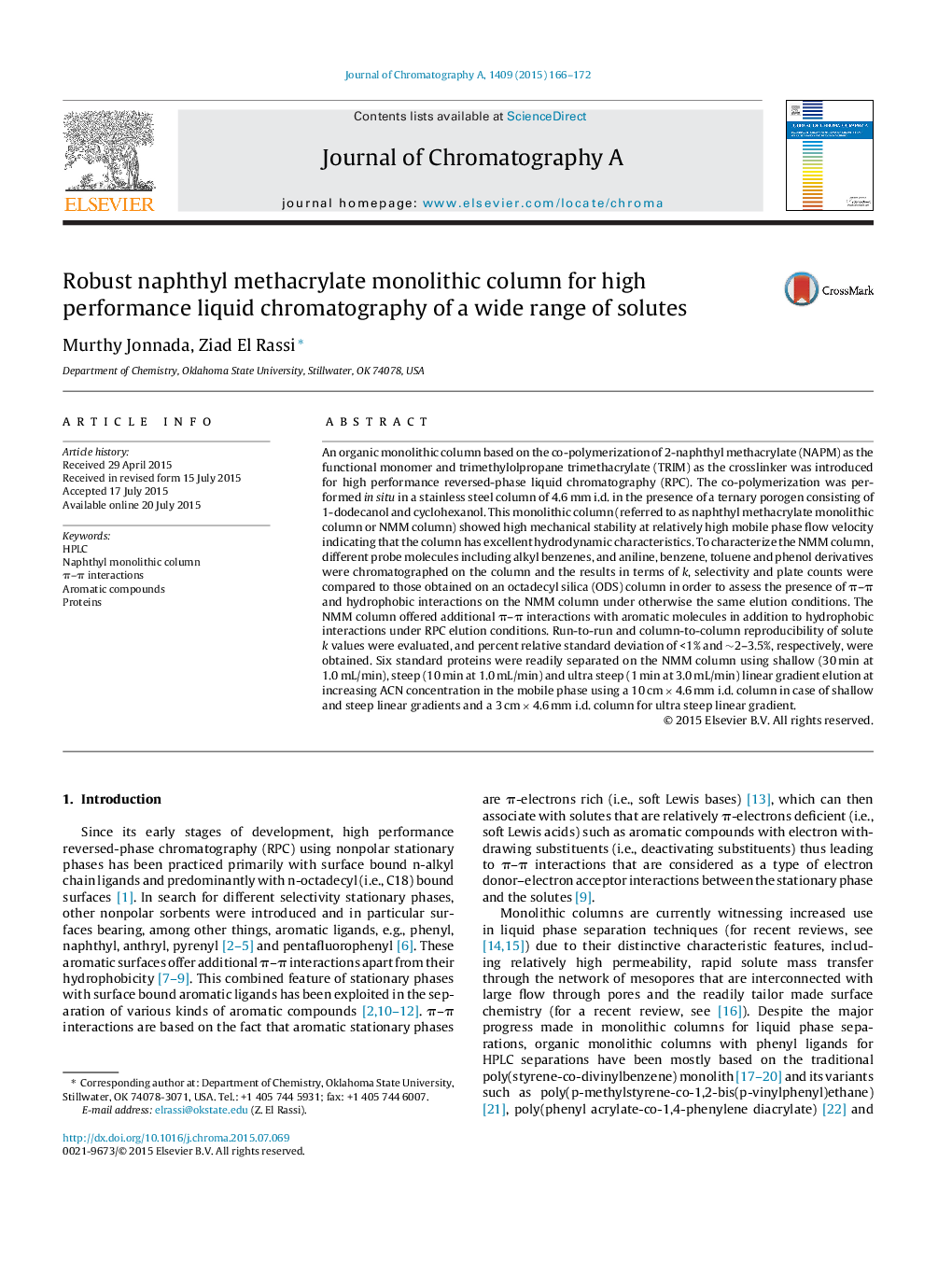| Article ID | Journal | Published Year | Pages | File Type |
|---|---|---|---|---|
| 1199004 | Journal of Chromatography A | 2015 | 7 Pages |
Abstract
An organic monolithic column based on the co-polymerization of 2-naphthyl methacrylate (NAPM) as the functional monomer and trimethylolpropane trimethacrylate (TRIM) as the crosslinker was introduced for high performance reversed-phase liquid chromatography (RPC). The co-polymerization was performed in situ in a stainless steel column of 4.6 mm i.d. in the presence of a ternary porogen consisting of 1-dodecanol and cyclohexanol. This monolithic column (referred to as naphthyl methacrylate monolithic column or NMM column) showed high mechanical stability at relatively high mobile phase flow velocity indicating that the column has excellent hydrodynamic characteristics. To characterize the NMM column, different probe molecules including alkyl benzenes, and aniline, benzene, toluene and phenol derivatives were chromatographed on the column and the results in terms of k, selectivity and plate counts were compared to those obtained on an octadecyl silica (ODS) column in order to assess the presence of Ï-Ï and hydrophobic interactions on the NMM column under otherwise the same elution conditions. The NMM column offered additional Ï-Ï interactions with aromatic molecules in addition to hydrophobic interactions under RPC elution conditions. Run-to-run and column-to-column reproducibility of solute k values were evaluated, and percent relative standard deviation of <1% and â¼2-3.5%, respectively, were obtained. Six standard proteins were readily separated on the NMM column using shallow (30 min at 1.0 mL/min), steep (10 min at 1.0 mL/min) and ultra steep (1 min at 3.0 mL/min) linear gradient elution at increasing ACN concentration in the mobile phase using a 10 cm Ã 4.6 mm i.d. column in case of shallow and steep linear gradients and a 3 cm Ã 4.6 mm i.d. column for ultra steep linear gradient.
Related Topics
Physical Sciences and Engineering
Chemistry
Analytical Chemistry
Authors
Murthy Jonnada, Ziad El Rassi,
